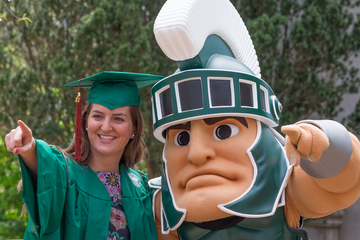We found 134 results that contain "ics"
Posted on: #iteachmsu


CICS stands for Customer Information Control System. CICS was developed in 1968 by IBM
CICS is a DB/DC system which is used in online applications. CICS was developed because batch operating system can execute only batch programs. CICS programs can be written in COBOL, C, C++, Java, etc. These days, users want information within seconds and in real time. To provide such quick service, we need a system which can process information online. CICS allows users to communicate with the back-end system to get the desired information. Examples of online programs include online banking system, flight reservation, etc. Following image shows the components of CICS and how they are inter-related −
CICS Overview
Functions of CICS
The main functions performed by CICS in an application are as follows −
CICS manages requests from concurrent users in an application.
Although, multiple users are working on CICS system but it gives a feel to user that he is the single user only.
CICS gives the access to data files for reading or updating them in an application.
Features of CICS
The features of CICS are as follows −
CICS is an operating system in itself, as it manages its own processor storage, has its own task manager which handles execution of multiple programs, and provides its own file management functions.
CICS provides online environment in batch operating system. Jobs submitted are executed immediately.
CICS is a generalized transaction processing interface.
It is possible to have two or more CICS regions at the same time, as CICS runs as a batch job in the operating system at the back-end.
CICS is a DB/DC system which is used in online applications. CICS was developed because batch operating system can execute only batch programs. CICS programs can be written in COBOL, C, C++, Java, etc. These days, users want information within seconds and in real time. To provide such quick service, we need a system which can process information online. CICS allows users to communicate with the back-end system to get the desired information. Examples of online programs include online banking system, flight reservation, etc. Following image shows the components of CICS and how they are inter-related −
CICS Overview
Functions of CICS
The main functions performed by CICS in an application are as follows −
CICS manages requests from concurrent users in an application.
Although, multiple users are working on CICS system but it gives a feel to user that he is the single user only.
CICS gives the access to data files for reading or updating them in an application.
Features of CICS
The features of CICS are as follows −
CICS is an operating system in itself, as it manages its own processor storage, has its own task manager which handles execution of multiple programs, and provides its own file management functions.
CICS provides online environment in batch operating system. Jobs submitted are executed immediately.
CICS is a generalized transaction processing interface.
It is possible to have two or more CICS regions at the same time, as CICS runs as a batch job in the operating system at the back-end.
CICS is a DB/DC system which is used in online applications. CICS was developed because batch operating system can execute only batch programs. CICS programs can be written in COBOL, C, C++, Java, etc. These days, users want information within seconds and in real time. To provide such quick service, we need a system which can process information online. CICS allows users to communicate with the back-end system to get the desired information. Examples of online programs include online banking system, flight reservation, etc. Following image shows the components of CICS and how they are inter-related −
CICS Overview
Functions of CICS
The main functions performed by CICS in an application are as follows −
CICS manages requests from concurrent users in an application.
Although, multiple users are working on CICS system but it gives a feel to user that he is the single user only.
CICS gives the access to data files for reading or updating them in an application.
Features of CICS
The features of CICS are as follows −
CICS is an operating system in itself, as it manages its own processor storage, has its own task manager which handles execution of multiple programs, and provides its own file management functions.
CICS provides online environment in batch operating system. Jobs submitted are executed immediately.
CICS is a generalized transaction processing interface.
It is possible to have two or more CICS regions at the same time, as CICS runs as a batch job in the operating system at the back-end.
CICS Overview
Functions of CICS
The main functions performed by CICS in an application are as follows −
CICS manages requests from concurrent users in an application.
Although, multiple users are working on CICS system but it gives a feel to user that he is the single user only.
CICS gives the access to data files for reading or updating them in an application.
Features of CICS
The features of CICS are as follows −
CICS is an operating system in itself, as it manages its own processor storage, has its own task manager which handles execution of multiple programs, and provides its own file management functions.
CICS provides online environment in batch operating system. Jobs submitted are executed immediately.
CICS is a generalized transaction processing interface.
It is possible to have two or more CICS regions at the same time, as CICS runs as a batch job in the operating system at the back-end.
CICS is a DB/DC system which is used in online applications. CICS was developed because batch operating system can execute only batch programs. CICS programs can be written in COBOL, C, C++, Java, etc. These days, users want information within seconds and in real time. To provide such quick service, we need a system which can process information online. CICS allows users to communicate with the back-end system to get the desired information. Examples of online programs include online banking system, flight reservation, etc. Following image shows the components of CICS and how they are inter-related −
CICS Overview
Functions of CICS
The main functions performed by CICS in an application are as follows −
CICS manages requests from concurrent users in an application.
Although, multiple users are working on CICS system but it gives a feel to user that he is the single user only.
CICS gives the access to data files for reading or updating them in an application.
Features of CICS
The features of CICS are as follows −
CICS is an operating system in itself, as it manages its own processor storage, has its own task manager which handles execution of multiple programs, and provides its own file management functions.
CICS provides online environment in batch operating system. Jobs submitted are executed immediately.
CICS is a generalized transaction processing interface.
It is possible to have two or more CICS regions at the same time, as CICS runs as a batch job in the operating system at the back-end.
CICS is a DB/DC system which is used in online applications. CICS was developed because batch operating system can execute only batch programs. CICS programs can be written in COBOL, C, C++, Java, etc. These days, users want information within seconds and in real time. To provide such quick service, we need a system which can process information online. CICS allows users to communicate with the back-end system to get the desired information. Examples of online programs include online banking system, flight reservation, etc. Following image shows the components of CICS and how they are inter-related −
CICS Overview
Functions of CICS
The main functions performed by CICS in an application are as follows −
CICS manages requests from concurrent users in an application.
Although, multiple users are working on CICS system but it gives a feel to user that he is the single user only.
CICS gives the access to data files for reading or updating them in an application.
Features of CICS
The features of CICS are as follows −
CICS is an operating system in itself, as it manages its own processor storage, has its own task manager which handles execution of multiple programs, and provides its own file management functions.
CICS provides online environment in batch operating system. Jobs submitted are executed immediately.
CICS is a generalized transaction processing interface.
It is possible to have two or more CICS regions at the same time, as CICS runs as a batch job in the operating system at the back-end.
NAVIGATING CONTEXT
Posted on: #iteachmsu


ADHD and School interventions
School interventions should include a team approach across multiple settings, consisting of both
preventive and intervention strategies.
Interventions must be based upon assessment data that includes information about the student’s strengths and needs as well as the environmental conditions in which her characteristics of ADHD occur.
Progress monitoring and strategy adjustments are critical to the success of any intervention plan (Wolraich & DuPaul, 2010).
preventive and intervention strategies.
Interventions must be based upon assessment data that includes information about the student’s strengths and needs as well as the environmental conditions in which her characteristics of ADHD occur.
Progress monitoring and strategy adjustments are critical to the success of any intervention plan (Wolraich & DuPaul, 2010).
PEDAGOGICAL DESIGN
Posted on: #iteachmsu


challenge management
As both an Olympic gold medalist and two-time world heavyweight champion, boxer Wladimir Klitschko stands apart from most athletes. But he also stands apart another way: in the attention he paid to his professional career outside the ring. Klitschko founded his own promotions and management groups during his fighting days, as well as an advanced certification program at a Swiss university to teach the basics of professional self-management. Challenge Management brings Klitschko’s insights to readers, revealing his methods and personal philosophies for tackling challenges in the arenas of business and finance. Challenge Management also provides readers with practical examples and personal anecdotes from a variety of sports managers, entrepreneurs, and friends of the author, including Arnold Schwarzenegger.
ASSESSING LEARNING
Posted on: #iteachmsu


Playlist: Students with ADHD
https://education.wm.edu/centers/ttac/documents/packets/adhd.pdf
PRIMER: What is Attention Deficit Hyperactivity Disorder? - ADDED
Classroom Interventions for Attention Deficit/ Hyperactivity Disorder Considerations Packet
Primer text from The College of William & Mary
ADHD is one of the most commonly diagnosed conditions of children (Centers for Disease
Control and Prevention, 2015).
In a 2016 Centers for Disease Control and Prevention study, scientists found that 6.1 million children aged 2-17 years living in the U.S. had been diagnosed with attention-deficit/hyperactivity disorder (ADHD), which is similar to previous en
Ages 6-11: Approximately 2.4 million children
Ages 12-17: Approximately 3.3 million children
The diagnostic term attention deficit/hyperactivity disorder (ADHD) refers to individuals who display patterns of inattention, impulsivity, and overactive behavior that interfere with daily functioning (American Psychiatric Association [APA], 2013).
The Diagnostic and Statistical Manual (DSM) V (APA, 2013) criteria for diagnosing ADHD list
three types of ADHD and the accompanying characteristics.
PRIMER: What is Attention Deficit Hyperactivity Disorder? - ADDED
Classroom Interventions for Attention Deficit/ Hyperactivity Disorder Considerations Packet
Primer text from The College of William & Mary
ADHD is one of the most commonly diagnosed conditions of children (Centers for Disease
Control and Prevention, 2015).
In a 2016 Centers for Disease Control and Prevention study, scientists found that 6.1 million children aged 2-17 years living in the U.S. had been diagnosed with attention-deficit/hyperactivity disorder (ADHD), which is similar to previous en
Ages 6-11: Approximately 2.4 million children
Ages 12-17: Approximately 3.3 million children
The diagnostic term attention deficit/hyperactivity disorder (ADHD) refers to individuals who display patterns of inattention, impulsivity, and overactive behavior that interfere with daily functioning (American Psychiatric Association [APA], 2013).
The Diagnostic and Statistical Manual (DSM) V (APA, 2013) criteria for diagnosing ADHD list
three types of ADHD and the accompanying characteristics.
Posted on: #iteachmsu


PRIMER: What is Attention Deficit Hyperactivity Disorder? - ADDED
Primer text from The College of William & Mary
ADHD is one of the most commonly diagnosed conditions of children (Centers for Disease
Control and Prevention, 2015).
In a 2016 Centers for Disease Control and Prevention study, scientists found that 6.1 million children aged 2-17 years living in the U.S. had been diagnosed with attention-deficit/hyperactivity disorder (ADHD), which is similar to previous en
Ages 6-11: Approximately 2.4 million children
Ages 12-17: Approximately 3.3 million children
The diagnostic term attention deficit/hyperactivity disorder (ADHD) refers to individuals who display patterns of inattention, impulsivity, and overactive behavior that interfere with daily functioning (American Psychiatric Association [APA], 2013).
The Diagnostic and Statistical Manual (DSM) V (APA, 2013) criteria for diagnosing ADHD list
three types of ADHD and the accompanying characteristics.
ADHD is one of the most commonly diagnosed conditions of children (Centers for Disease
Control and Prevention, 2015).
In a 2016 Centers for Disease Control and Prevention study, scientists found that 6.1 million children aged 2-17 years living in the U.S. had been diagnosed with attention-deficit/hyperactivity disorder (ADHD), which is similar to previous en
Ages 6-11: Approximately 2.4 million children
Ages 12-17: Approximately 3.3 million children
The diagnostic term attention deficit/hyperactivity disorder (ADHD) refers to individuals who display patterns of inattention, impulsivity, and overactive behavior that interfere with daily functioning (American Psychiatric Association [APA], 2013).
The Diagnostic and Statistical Manual (DSM) V (APA, 2013) criteria for diagnosing ADHD list
three types of ADHD and the accompanying characteristics.
NAVIGATING CONTEXT
Posted on: #iteachmsu


How Iceland hammered COVID with science
Driving along Reykjavik’s windswept roads on a cold March morning, Kári Stefánsson turned up the radio. The World Health Organization had just announced that an estimated 3.4% of people infected with SARS-CoV-2 would die — a shockingly high fatality rate, some 30 times larger than that for seasonal influenza.
There was a problem with that estimate, however: it was based on reported cases of COVID-19, rather than all cases, including mild and asymptomatic infections. “I couldn’t figure out how they could calculate it out without knowing the spread of the virus,” recalls Stefánsson, who is the founder and chief executive of deCODE genetics, a human-genomics company in Reykjavik. He became convinced that making sense of the epidemic, and protecting the people of Iceland from it, would require a sweeping scientific response.
There was a problem with that estimate, however: it was based on reported cases of COVID-19, rather than all cases, including mild and asymptomatic infections. “I couldn’t figure out how they could calculate it out without knowing the spread of the virus,” recalls Stefánsson, who is the founder and chief executive of deCODE genetics, a human-genomics company in Reykjavik. He became convinced that making sense of the epidemic, and protecting the people of Iceland from it, would require a sweeping scientific response.
Posted on: #iteachmsu


Parallel Computer
Parallel Computer Architecture is the method of organizing all the resources to maximize the performance and the programmability within the limits given by technology and the cost at any instance of time. It adds a new dimension in the development of computer system by using more and more number of processors. This tutorial covers the basics related to Parallel Computer Architecture, discussing the various concepts and terminologies associated with the topic
Posted on: #iteachmsu

Parallel Computer
Parallel Computer Architecture is the method of organizing all the resources to maximize the performance and the programmability within the limits given by technology and the cost at any instance of time. It adds a new dimension in the development of computer system by using more and more number of processors. This tutorial covers the basics related to Parallel Computer Architecture, discussing the various concepts and terminologies associated with the topic
Posted on: #iteachmsu

How Can We Successfully Land a Rover on Mars?
The classic egg drop experiment gets reinvented as a driving question for physics students to explore a real-world problem.
By Suzie Boss
July 26, 2018
When a teenager climbs atop his desk and drops an object to the floor, teacher Johnny Devine doesn’t object. Far from it—he’s as eager as the rest of the class to see what happens next.
In a split second, the student and his teammates get positive feedback for the object they have cobbled together by hand. A small parachute made of plastic and held in place with duct tape opens as planned, slowing the descent and easing the cargo to a safe landing. Students exchange quick smiles of satisfaction as they record data. Their mission isn’t accomplished yet, but today’s test run brings them one step closer to success as aspiring aerospace engineers.
To boost engagement in challenging science content, Devine has his students tackle the same problems that professional scientists and engineers wrestle with. “Right away, they know that what they are learning can be applied to an actual career,” Devine says. “Students are motivated because it’s a real task.”
From the start of Mission to Mars, students know that expert engineers from local aerospace companies will evaluate their final working models of Mars landing devices. Their models will have to reflect the students’ best thinking about how to get a payload from orbit onto the surface of the Red Planet without damaging the goods inside. While real Mars landings involve multimillion-dollar equipment, students’ launchers will carry four fragile eggs.
THE ROAD MAP
Although the project gives students considerable freedom, it unfolds through a series of carefully designed stages, each focused on specific learning goals. Having a detailed project plan “creates a roadmap,” Devine explains, “for the students to really track their progress and see how what they’re learning connects back to the guiding question: How can we successfully land a rover on Mars?”
©George Lucas Educational Foundation
Before introducing technical content, Devine wants students to visualize what space scientists actually do. By watching videos of engineers who design entry, descent, and landing systems for spacecraft, students start getting into character for the work ahead.
Devine introduces a series of hands-on activities as the project unfolds to help students put physics concepts into action. They learn about air resistance, for instance, by experimenting with parachute designs and wrestling with a real challenge: How will they slow their landers to a reasonable speed for entry into the thin Martian atmosphere?
To apply the concept of change in momentum, students design airbag systems to go on the bottom of their landers—a location aptly called the crumple zone. They experiment with bubble wrap and other materials as potential cushioners for their cargo.
As the grand finale approaches, students keep using what they learn to test, analyze, and modify their designs. “You have to repeat the equations with different trials,” one student explains. “Being able to use that math over and over again helps it stick.”
Much of the hands-on learning in this PBL classroom “might look like a traditional physics lab,” Devine acknowledges, with students learning concepts through inquiry investigations. What’s different is the teacher’s ongoing reminder “to make sure students stay in character” as systems engineers. Each lab investigation relates back to their driving question and creates more opportunities for Devine to ask probing questions and formatively assess his students’ understanding. “We do a lot of framing in and framing out after each of those lessons so students have the chance to reflect and connect it back,” the teacher explains.
EXPERT CONVERSATIONS
When it is finally time for students to launch their precious cargo off a second-story landing, engineers from local aerospace companies are standing by to assess results. How many eggs in each lander will survive the fall?
Even more important than the test data are the discussions between experts and students. One engineer, for instance, asks to see earlier versions of a team’s design and hear about the tests that led to modifications. A student named Elizabeth perks up when she hears engineers using the same technical vocabulary that she and her classmates have learned. “It was kind of a connection—this is actually a thing that goes on,” she says.
“They had really deep, meaningful conversations so that students could practice communicating their justification for their designs,” Devine says. Hearing them use academic language and apply physics concepts tells the teacher that students deeply understand the science behind their designs. “At the end of the day, that’s what I’m most concerned about,” he says.
https://youtu.be/bKc2shFqLao
By Suzie Boss
July 26, 2018
When a teenager climbs atop his desk and drops an object to the floor, teacher Johnny Devine doesn’t object. Far from it—he’s as eager as the rest of the class to see what happens next.
In a split second, the student and his teammates get positive feedback for the object they have cobbled together by hand. A small parachute made of plastic and held in place with duct tape opens as planned, slowing the descent and easing the cargo to a safe landing. Students exchange quick smiles of satisfaction as they record data. Their mission isn’t accomplished yet, but today’s test run brings them one step closer to success as aspiring aerospace engineers.
To boost engagement in challenging science content, Devine has his students tackle the same problems that professional scientists and engineers wrestle with. “Right away, they know that what they are learning can be applied to an actual career,” Devine says. “Students are motivated because it’s a real task.”
From the start of Mission to Mars, students know that expert engineers from local aerospace companies will evaluate their final working models of Mars landing devices. Their models will have to reflect the students’ best thinking about how to get a payload from orbit onto the surface of the Red Planet without damaging the goods inside. While real Mars landings involve multimillion-dollar equipment, students’ launchers will carry four fragile eggs.
THE ROAD MAP
Although the project gives students considerable freedom, it unfolds through a series of carefully designed stages, each focused on specific learning goals. Having a detailed project plan “creates a roadmap,” Devine explains, “for the students to really track their progress and see how what they’re learning connects back to the guiding question: How can we successfully land a rover on Mars?”
©George Lucas Educational Foundation
Before introducing technical content, Devine wants students to visualize what space scientists actually do. By watching videos of engineers who design entry, descent, and landing systems for spacecraft, students start getting into character for the work ahead.
Devine introduces a series of hands-on activities as the project unfolds to help students put physics concepts into action. They learn about air resistance, for instance, by experimenting with parachute designs and wrestling with a real challenge: How will they slow their landers to a reasonable speed for entry into the thin Martian atmosphere?
To apply the concept of change in momentum, students design airbag systems to go on the bottom of their landers—a location aptly called the crumple zone. They experiment with bubble wrap and other materials as potential cushioners for their cargo.
As the grand finale approaches, students keep using what they learn to test, analyze, and modify their designs. “You have to repeat the equations with different trials,” one student explains. “Being able to use that math over and over again helps it stick.”
Much of the hands-on learning in this PBL classroom “might look like a traditional physics lab,” Devine acknowledges, with students learning concepts through inquiry investigations. What’s different is the teacher’s ongoing reminder “to make sure students stay in character” as systems engineers. Each lab investigation relates back to their driving question and creates more opportunities for Devine to ask probing questions and formatively assess his students’ understanding. “We do a lot of framing in and framing out after each of those lessons so students have the chance to reflect and connect it back,” the teacher explains.
EXPERT CONVERSATIONS
When it is finally time for students to launch their precious cargo off a second-story landing, engineers from local aerospace companies are standing by to assess results. How many eggs in each lander will survive the fall?
Even more important than the test data are the discussions between experts and students. One engineer, for instance, asks to see earlier versions of a team’s design and hear about the tests that led to modifications. A student named Elizabeth perks up when she hears engineers using the same technical vocabulary that she and her classmates have learned. “It was kind of a connection—this is actually a thing that goes on,” she says.
“They had really deep, meaningful conversations so that students could practice communicating their justification for their designs,” Devine says. Hearing them use academic language and apply physics concepts tells the teacher that students deeply understand the science behind their designs. “At the end of the day, that’s what I’m most concerned about,” he says.
https://youtu.be/bKc2shFqLao
Posted by: Chathuri Super admin..
Assessing Learning
Posted on: #iteachmsu

An Effective Management Information System
Effective Management Information System:
Essential characteristics of an effective management information system are 1. MIS is management-oriented 2. MIS is developed under the direction of management 3. MIS is an integrated system 4. common data flow 5. MIS is based upon the future needs of the business 6. MIS is composed of sub-systems 7. MIS requires flexibility 8. distributed data processing and 9. MIS is mostly computerized.
Management Information System is established in an organization to provide relevant information to the managers to operate effectively and efficiently.
1. MIS is management-oriented:
The design of MIS starts with an appraisal of the information needs of the management. The system is usually designed from top to bottom. However, this does not mean that MIS fulfills the information needs of top management only.
It only implies that the information needs of the top management will serve as a basis for the assessment of the information needs of lower-level managers. In every case, the system should be designed to cater to the information needs of all levels of management.
2. MIS is developed under the direction of management:
Because of the management orientation of MIS, it is imperative that the management of an organization actively directs the development and establishment of the MIS in an organization.
It is rare to find an MIS where the manager himself, or a high-level representative of his department, is not spending a good deal of time in the system design.
Essential characteristics of an effective management information system are 1. MIS is management-oriented 2. MIS is developed under the direction of management 3. MIS is an integrated system 4. common data flow 5. MIS is based upon the future needs of the business 6. MIS is composed of sub-systems 7. MIS requires flexibility 8. distributed data processing and 9. MIS is mostly computerized.
Management Information System is established in an organization to provide relevant information to the managers to operate effectively and efficiently.
1. MIS is management-oriented:
The design of MIS starts with an appraisal of the information needs of the management. The system is usually designed from top to bottom. However, this does not mean that MIS fulfills the information needs of top management only.
It only implies that the information needs of the top management will serve as a basis for the assessment of the information needs of lower-level managers. In every case, the system should be designed to cater to the information needs of all levels of management.
2. MIS is developed under the direction of management:
Because of the management orientation of MIS, it is imperative that the management of an organization actively directs the development and establishment of the MIS in an organization.
It is rare to find an MIS where the manager himself, or a high-level representative of his department, is not spending a good deal of time in the system design.
Authored by: Rupali
Assessing Learning
Posted on: #iteachmsu

Crime
Crime may not be on the top of people’s lists of favorite topics but it’s something that’s talked about. Depending on your adult students’ life experiences, it may be something that has affected their lives. Learning to discuss it could help your students out in the long run. Good discussion questions are:
Is crime a big problem in your city/country?
Have you ever been a victim of crime?
What crime is common in your city/country?
What would you do if you noticed a crime being committed?
How is the law enforcement in your city/country?
Is crime a big problem in your city/country?
Have you ever been a victim of crime?
What crime is common in your city/country?
What would you do if you noticed a crime being committed?
How is the law enforcement in your city/country?
Authored by: Divya Sawant
Disciplinary Content
Posted on: #iteachmsu


Genetics and Molecular Biology
http://www.scielo.br/revistas/gmb/iaboutj.htm#001
https://venturit.atlassian.net/browse/IT-1478
Genetics and Molecular Biology is abstracted or indexed in:
PubMed
Science Citacion Index Expanded
Current Contents/Life Sciences
ISI Web of Science
Biotechnology Citation Index
Biological Abstracts
Excerpta Medica
Genetics Abstracts
Animal Breeding Abstracts
Plant Breeding Abstracts
Chemical Abstracts
Referativnyi Zhurnal (Abstracts Journal, Russia)
Periódica (UNAM-Mexico)
Lilacs
https://venturit.atlassian.net/browse/IT-1478
Genetics and Molecular Biology is abstracted or indexed in:
PubMed
Science Citacion Index Expanded
Current Contents/Life Sciences
ISI Web of Science
Biotechnology Citation Index
Biological Abstracts
Excerpta Medica
Genetics Abstracts
Animal Breeding Abstracts
Plant Breeding Abstracts
Chemical Abstracts
Referativnyi Zhurnal (Abstracts Journal, Russia)
Periódica (UNAM-Mexico)
Lilacs
Posted by: Chathuri Super admin..
Posted on: #iteachmsu


Speech perception
Speech perception is the process by which the sounds of language are heard, interpreted, and understood. The study of speech perception is closely linked to the fields of phonology and phonetics in linguistics and cognitive psychology and perception in psychology. In the speech, perception seeks to understand how human listeners recognize speech sounds and use this information to understand spoken language. Speech perception research has applications in building computer systems that can recognize speech, in improving speech recognition for hearing- and language-impaired listeners, and in foreign-language teaching.
The process of perceiving speech begins at the level of the sound signal and the process of audition. (For a complete description of the process of the audition, After processing the initial auditory signal, speech sounds are further processed to extract acoustic cues and phonetic information. This speech information can then be used for higher-level language processes, such as word recognition.
Link URL : https://iteach-testing.venturit.org/browse/articles
The process of perceiving speech begins at the level of the sound signal and the process of audition. (For a complete description of the process of the audition, After processing the initial auditory signal, speech sounds are further processed to extract acoustic cues and phonetic information. This speech information can then be used for higher-level language processes, such as word recognition.
Link URL : https://iteach-testing.venturit.org/browse/articles
Authored by: Rupali
Posted on: #iteachmsu


Greek Articles
Game gerdara
If you're trying to learn Greek Articles you will find some useful resources including a course about Definite and Indefinite Articles... to help you with your Greek grammar. Try to concentrate on the lesson and notice the pattern that occurs each time the word changes its place. Also don't forget to check the rest of our other lessons listed on Learn Greek. Enjoy the rest of the lesson!
If you're trying to learn Greek Articles you will find some useful resources including a course about Definite and Indefinite Articles... to help you with your Greek grammar. Try to concentrate on the lesson and notice the pattern that occurs each time the word changes its place. Also don't forget to check the rest of our other lessons listed on Learn Greek. Enjoy the rest of the lesson!
Authored by: Chathu
Disciplinary Content
Posted on: #iteachmsu


Greek Articles
Game gerdara
If you're trying to learn Greek Articles you will find some useful resources including a course about Definite and Indefinite Articles... to help you with your Greek grammar. Try to concentrate on the lesson and notice the pattern that occurs each time the word changes its place. Also don't forget to check the rest of our other lessons listed on Learn Greek. Enjoy the rest of the lesson!
If you're trying to learn Greek Articles you will find some useful resources including a course about Definite and Indefinite Articles... to help you with your Greek grammar. Try to concentrate on the lesson and notice the pattern that occurs each time the word changes its place. Also don't forget to check the rest of our other lessons listed on Learn Greek. Enjoy the rest of the lesson!
Authored by: Chathu
Disciplinary Content
Posted on: #iteachmsu


Human computer interaction (HCI)
Introduction
Humans interact with computers in any way the interface between humans and computers is crucial to facilitate this interaction. Desktop applications, internet browsers, handheld computers, ERP, and computer kiosks make use of the prevalent graphical user interfaces (GUI) of today.
Voice user interfaces (VUI) are used for speech recognition and synthesizing systems, and the emerging multi-modal and Graphical user interfaces (GUI) allow humans to engage with embodied character agents in a way that cannot be achieved with other interface paradigms. The growth in the human-computer interaction field has been in the quality of interaction, and indifferent branching in its history. Instead of designing regular interfaces, the different research branches have had a different focus on the concepts of multimodality rather than unimodality, intelligent adaptive interfaces rather than command/action based ones, and finally active rather than passive interfaces.
An important facet of HCI is user satisfaction (or simply End-User Computing Satisfaction). "Because human-computer interaction studies a human and a machine in communication, it draws from supporting knowledge on both the machine and the human side. On the machine side, techniques in computer graphics, operating systems, programming languages, and development environments are relevant.
Humans interact with computers in any way the interface between humans and computers is crucial to facilitate this interaction. Desktop applications, internet browsers, handheld computers, ERP, and computer kiosks make use of the prevalent graphical user interfaces (GUI) of today.
Voice user interfaces (VUI) are used for speech recognition and synthesizing systems, and the emerging multi-modal and Graphical user interfaces (GUI) allow humans to engage with embodied character agents in a way that cannot be achieved with other interface paradigms. The growth in the human-computer interaction field has been in the quality of interaction, and indifferent branching in its history. Instead of designing regular interfaces, the different research branches have had a different focus on the concepts of multimodality rather than unimodality, intelligent adaptive interfaces rather than command/action based ones, and finally active rather than passive interfaces.
An important facet of HCI is user satisfaction (or simply End-User Computing Satisfaction). "Because human-computer interaction studies a human and a machine in communication, it draws from supporting knowledge on both the machine and the human side. On the machine side, techniques in computer graphics, operating systems, programming languages, and development environments are relevant.
Authored by: Rupali
Assessing Learning
Posted on: #iteachmsu


Genetics: The scientific study of heredity. Genetics pertains to humans and all other organisms. So, for example, there is human genetics, mouse genetics, fruit fly genetics, etc.
Human genetics today comprises a number of overlapping fields, including:
Classical or formal genetics -- the study of the transmission of single genes within families and the analysis of more complex types of inheritance.
Clinical genetics -- the diagnosis, prognosis and, in some cases, the treatment of genetic diseases.
REF: https://www.medicinenet.com/genetics/definition.htm
Human genetics today comprises a number of overlapping fields, including:
Classical or formal genetics -- the study of the transmission of single genes within families and the analysis of more complex types of inheritance.
Clinical genetics -- the diagnosis, prognosis and, in some cases, the treatment of genetic diseases.
REF: https://www.medicinenet.com/genetics/definition.htm
Posted by: Chathuri Super admin..
Disciplinary Content
Posted on: #iteachmsu


https://moz.com/blog/absolute-beginners-guide-to-google-analytics
Why you need Google Analytics Do you have a blog? Do you have a static website? If the answer is yes, whether they are for personal or business use, then you need Google Analytics. Here are just a few of the many questions about your website that you can answer using Google Analytics.
Why you need Google Analytics Do you have a blog? Do you have a static website? If the answer is yes, whether they are for personal or business use, then you need Google Analytics. Here are just a few of the many questions about your website that you can answer using Google Analytics.
Posted by: Greg Thomsan
Navigating Context
Posted on: #iteachmsu


Data Analytics is the process of using specialized systems and software to inspect information in datasets in order to derive conclusions. This focuses on specific areas with specific goals. Briefly, the two perform
Posted by: Rupali Jagtap
Assessing Learning
Posted on: #iteachmsu

Dynamic time warping is an algorithm for measuring similarity between two sequences that may vary in time or speed. For instance, similarities in walking patterns would be detected, even if in one video the person was walking slowly and if in another he or she were walking more quickly, or even if there were accelerations and deceleration during the course of one observation. DTW has been applied to video, audio, and graphics – indeed, any data that can be turned into a linear representation can be analyzed with DTW.
Posted by: Rupali Jagtap
Assessing Learning
Posted on: #iteachmsu
![Article preview image]()
Lorem Ipsum is simply dummy text of the printing and typesetting industry. Lorem Ipsum has been the industry's standard dummy text ever since the 1500s, when an unknown printer took a galley of type and scrambled it to
Posted by: Chathuri Super admin..
Posted on: #iteachmsu

Human trafficking-considered modern-day slavery- is a global problem and is becoming increasingly prevalent across the World. Types and venues of trafficking in the United States Identifying victims of trafficking in healthcare settings Identifying warning signs of trafficking in healthcare settings for minors and adults Identifying resources for reporting suspected victims of human trafficking. The training requirement dictates a timeline beginning with the first renewal cycle for the period of 2017-2022. Let's talk more and research many areas, So join us by registering
The timeline for the training of individuals who are seeking initial nursing licensure - is 5 or more years of experience.
The timeline for the training of individuals who are seeking initial nursing licensure - is 5 or more years of experience.
Posted by: Super Admin
Disciplinary Content
Posted on: #iteachmsu

A career in Artificial Intelligence requires a strong background in programming, systems analysis, and/or fluency in several computer languages. A bachelor's degree in mathematics, data science, statistics, and computer science can qualify you for entry-level positions in the Artificial Intelligence field.
Posted by: Rupali Jagtap
Assessing Learning
Posted on: #iteachmsu


Artificial intelligence (AI) aims to or is required to synthesize goal-orientated processes such as problem-solving, decision-making, environmental adaptation, learning, and communication found in humans and animals.
https://www.w3.org/TR/UNDERSTANDING-WCAG20/visual-audio-contrast-scale.html
artificial intelligence research has been necessarily cross-disciplinary, drawing on areas of expertise such as applied mathematics, symbolic logic, semiotics, electrical engineering, neurophysiology, and social intelligence.
https://www.w3.org/TR/UNDERSTANDING-WCAG20/visual-audio-contrast-scale.html
artificial intelligence research has been necessarily cross-disciplinary, drawing on areas of expertise such as applied mathematics, symbolic logic, semiotics, electrical engineering, neurophysiology, and social intelligence.
Posted by: Rupali Jagtap
Assessing Learning
Host: MSU Libraries

Learn QGIS: Making a color shaded map in QGIS (Online)
Learn the basics of QGIS, the free open-source geospatial software—this workshop will demonstrate how to make a choropleth (color shaded) map and place graduated symbols representing data on it, load shape-files and .csv table files into QGIS, join data to spatial information and edit features. No experience with QGIS or Geographic Information Systems is required.
Navigating Context
Host: MSU Libraries

Sew What? Getting Started with a Sewing Machine
Discover the joy of sewing! This beginner-friendly session will guide you through the essentials of how a sewing machine works, using a mechanical sewing machine. Learn valuable skills while creating a project to take home. Perfect for anyone eager to learn the basics, this workshop is designed to boost your confidence and spark creativity!
Navigating Context
Host: MSU Libraries

Artist Workshop: Using 360 Cameras to Show Changes to Place
Join the DSL Graduate Arts Fellow, Hailey Becker (Art, Art History and Design and Forestry) in a workshop on using 360 cameras to capture changes to place. Participants will be guided through the basics of recording and editing 360 footage, ending with their footage being displayed in the Digital Scholarship Lab 360 Room. Using 360 footage can be a great way to archive an artistic practice or scientific research. No experience required, all levels welcome!
Navigating Context
EXPIRED
Host: MSU Libraries

We Need You in the Locker Room: Book Talk and Signing with Dr. David Kaufman
Kick off Spartan football season with a talk and book signing by Dr. David Kaufman, author of We Need You in the Locker Room, which provides a fascinating, unique, and immensely readable perspective on a game we only think we know. A page-turner about a championship season, this book is also a smart, sensitive argument for how football can be preserved.
Dr. Kaufman served as the on-field embedded neurologist for the Michigan State University football team for 13 years. Dr. Kaufman currently serves as the Assistant Vice President of Clinical Affairs, he is a tenured Professor and Founding Chair of the Department of Neurology and Ophthalmology at MSU.
"Kaufman's perspective as a neurologist assigned to the Michigan State Spartans football team makes him an intimate witness to both the drama, teamwork, and courage of young athletes-and the toll this violent game exacts on their bodies.” Samuel G. Freedman
Copies of Dr. Kaufman’s book will be available for purchase and signing, with all proceeds going directly to the following two charitable funds:
· The Father John (Jake) Foglio Endowed Chair of Spirituality in the MSU College of Arts & Letters
· The George Webster Memorial Scholarship in MSU Athletics
Navigating Context
EXPIRED
Host: CTLI

Instructor Jumpstart: Part 2
Join the Center for Teaching and Learning Innovation (CTLI)- in partnership with the Office for Faculty and Academic Staff Development (OFASD)- for a two part introduction to high-level topics related to quality, inclusive teaching at Michigan State University. Each session in “Instructor Jumpstart” is a one-hour, hybrid, presentation, co-facilitated by Drs. Makena Neal and Ellie Louson.
Upon completion of this learning experience, participants will be able to:
participants will be able to identify key principles of quality and inclusive teaching practices at MSU
participants will recognize core strategies for creating an engaging and equitable learning environment
participants will describe foundational concepts related to effective instructional design and inclusive pedagogy.
The in-person location for this session is the Center for Teaching and Learning Innovation. Please join us in the Main Library, Room W207. For directions to W207, please visit the Room Locations page.
Navigating Context
EXPIRED
Host: CTLI

Instructor Jumpstart: Part 1
Join the Center for Teaching and Learning Innovation (CTLI)- in partnership with the Office for Faculty and Academic Staff Development (OFASD)- for a two part introduction to high-level topics related to quality, inclusive teaching at Michigan State University. Each session in “Instructor Jumpstart” is a one-hour, hybrid, presentation, co-facilitated by Drs. Makena Neal and Ellie Louson.
Upon completion of this learning experience, participants will be able to:
participants will be able to identify key principles of quality and inclusive teaching practices at MSU
participants will recognize core strategies for creating an engaging and equitable learning environment
participants will describe foundational concepts related to effective instructional design and inclusive pedagogy.
The in-person location for this session is the Center for Teaching and Learning Innovation. Please join us in the Main Library, Room W207. For directions to W207, please visit the Room Locations page.
Navigating Context
EXPIRED









